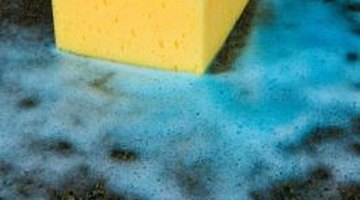How to Clean a Carbon Filter
Carbon filters, whether used wet or dry, can quickly become coated in grime. Air purifiers and many types of fish tanks use carbon filters that need frequently cleaning so the carbon can do its job. The confusion with carbon filters occurs because of two very different actions: adsorption and absorption. Carbon filters are designed to adsorb, or attract and bind with, toxins. Carbon does not absorb, or take into itself, those toxins. You can clean the filter and the carbon itself, but cleaning will not affect its adsorption capacity -- that factor will never change because it is based on the oxidation process used to produce the carbon.
Carbon Air Filters

-
Wipe debris from the outside of the filter using a dry sponge or your hand. Carbon air filters are often similar to lint traps on clothes dryers; gather lint from a carbon filter in the same manner as you would when cleaning a lint trap. Never wet a carbon air filter.
-
Tap the carbon air filter on a solid surface to loosen dust and dirt trapped inside.
-
Grasp the carbon air filter firmly and wave it through the air vigorously. Wave the filter until you can no longer see dust coming from the filter. Run the sponge over the outside of the filter to remove any dust or dirt on the frame.
Carbon Water Filters
-
Hold the carbon water filter under warm, running water for approximately one minute to loosen and rinse any outside debris. Debris on carbon water filters must generally be removed by picking off small pieces.
-
Squirt a dime-sized dollop of liquid detergent on a sponge. Wet the sponge and rub its two ends together to create suds.
-
Rub the sponge over the carbon water filter using a gentle, circular motion. Doing so will remove film, residue or debris.
-
Flip over the carbon water filter. Rub the sponge over the opposite side to remove any film, residue or debris.
-
Rinse the carbon water filter by holding it under warm, running water until the water runs clear.
References
Resources
Warnings
- Do not get a carbon air filter wet unless the manufacturer's directions explicitly tell you to do so.
Writer Bio
A professional writer since 1994, Eva Talent was trained as a journalist by the U.S. Army. She received two Army Commendation Medals and an Army Achievement Medal for journalistic excellence. Her press releases are frequently featured on the websites of the Department of Defense and the Army. Talent holds a Bachelor of Arts in psychology from the University of Michigan.
Photo Credits
- Jupiterimages/Photos.com/Getty Images
More Articles



